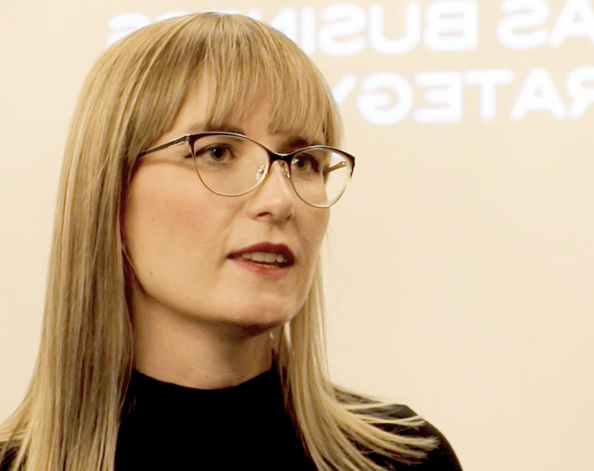Receive Focus insights straight to your inbox
“I think the biggest threat to businesses is to entirely outsource their relationship with their human customers to web-based platforms,” says Bronwyn Williams, a Trend Translator and Future Finance Specialist for Flux Trends.
Setting out the “New Rules of Engagement” at a Flux Trends event in Johannesburg, Williams spoke about the importance of maintaining a human touch in a digital world. “When you take the human connection out of your relationship entirely, you are potentially automating away that relationship and that brand loyalty.”
Her advice to brands? “Focus on people first and connecting with more bodies because those are the people that are going to save your brand as platforms and data eat the world.”
Are the days of big brands numbered?
Big brands are grappling with the rise of tech-savvy challenger and disruptor brands, but they have one unique selling point that could help them survive in the digital era.
“A brand, in its essence, is a sense of shared value, of owned community. A brand is a human creation, designed for humans; whereas big data is a zero-sum game - it’s a case of the most efficient and the most cost effective, wins.
“And that’s great if you’re selling screws, it might not be great if you’re selling really beautiful shoes. So if you want to really make a connection with people, you can’t throw the brand out with the bath water.”
Investec built its latest brand campaign around this idea of being human and distilling complexity in an increasingly digital and volatile world.
“In a world where we all compete in high tech, the power of the human connection remains central to our offering. Our campaign highlights the human on the other side and celebrates being the partner to our clients, reassuring them that we will guide them through these out of the ordinary times,” says Danni Dixon, Investec marketing head.

Consumers are craving human interaction, relevance, support and personalised service. By using technology to deliver these experiences and enhance their humanity, brands can thrive in this new world.
Digital marketing trends to look out for
Brands that want to develop lasting relationships with individuals and to persuade them to purchase their products and services need to understand the key marketing trends on the horizon, says Williams.
The spatial web
The biggest opportunity that many brands are missing out on because of a lack of understanding is the rise of the spatial web, often dismissed as just for gamers and teenagers.
Fortnite, the world’s biggest video game series, has 250 million users. The virtual reality, role-playing game is set in a post-apocalyptic world and “one in eight hundred humans on earth are logged into it, at pretty much any given time,” says Williams.

There’s a huge opportunity in terms of being an early adopter in [the augmented spatial web space], and it’s going to be a huge cost to pay if you don’t catch onto that trend before it becomes ubiquitous.
“What’s interesting about Fortnite is that it’s not just a game that people log into and play, rather it’s become a new form of social network, because people will actually communicate with their friends using their headset, using their avatar, in this virtual reality world. So you’ll find teenagers staying in their bedrooms, but they’re actually going out into the world that they’ve built.
”Savvy-brands can insert themselves into these virtual worlds. “There’s a huge opportunity in terms of being an early adopter in that space, and it’s going to be a huge cost to pay if you don’t catch onto that trend before it becomes ubiquitous.”
READ MORE: Four ways that companies can get to grips with digital disruption.
Data hyper personalisation
While personalisation has now gone mainstream, brands like Walgreens in the US are now taking it to the next level. The pharmacy store chain is testing facial recognition technology in their fridge doors that targets ads to customers based on their age and gender and even the weather. This, says Williams, is only the beginning.
Sushi Singularity, a concept for a Japanese restaurant, will use a diner’s saliva or urine to 3D print sushi based on their nutritional needs.
Price diversity
Price diversity is based on the use of consumers’ data to determine the price individuals will pay for a product or service. For example, Uber charges different people different fares for the exact same route based on a “dynamic pricing” algorithm that determines what to charge you based on amongst other things your user profile.
On the flip side, restaurants like Robin Hood in Spain that “charges the rich to feed the poor” – by day it serves wealthy patrons (who are charged a premium) and at night it feeds 100 homeless people for free.
Unconscious consumerism
One aspect of unconscious consumerism is the Western habit of conspicuous consumption, but a new trend that’s emerging is “consumers outsourcing their purchase decisions to artificial intelligence”, says Williams citing technology like voice-activated personal assistants (think Alexa and Google Home).
“Basically, what’s happening is that brands and businesses are going to find themselves selling to bots, more than they are selling to consumers.”
Data dividends
“Brands that have built their businesses using data, need to watch out, because consumers are waking up to the value their data has, and they are starting to either demand that brands pay them for their data, or they are just refusing to share their data altogether,” says Williams.
She uses the example of consumers opting for alternative search engines like DuckDuckGo that doesn’t collect personal data and BitClave that allows you to get paid for all the ads that you watch.
Cutting out the middleman
Flux points to a disintermediation of middlemen by digitisation as a major shift that is already disrupting all industries from finance to tourism. “If your role in the value chain is to extract a rate, or to extract value from the value chain, rather than add value to the value chain, you are in trouble.
As automation changes the way we consume, “having an authentic voice as a brand is key”, says Dixon. “Consumers are craving human interaction, relevance, support and personalised service. By using technology to deliver these experiences and enhance their humanity, brands can thrive in this new world.”
READ MORE: The importance of an exponential mindset shift for businesses
About the author

Lenyaro Sello
Digital content specialist
Lenyaro is a key member of Investec's Global Content team, based in Johannesburg, who focuses on relevant and topical issues for internal and external audiences including clients. She is a well-travelled multi-skilled multimedia journalist who previously held roles within eNews Channel Africa (eNCA) and Eyewitness News (EWN).
About the author

Ingrid Booth
Lead digital content producer
Ingrid Booth is a consumer magazine journalist who made the successful transition to corporate PR and back into digital publishing. As part of Investec's Brand Centre digital content team, her role entails coordinating and producing multi-media content from across the Group for Investec's publishing platform, Focus.





